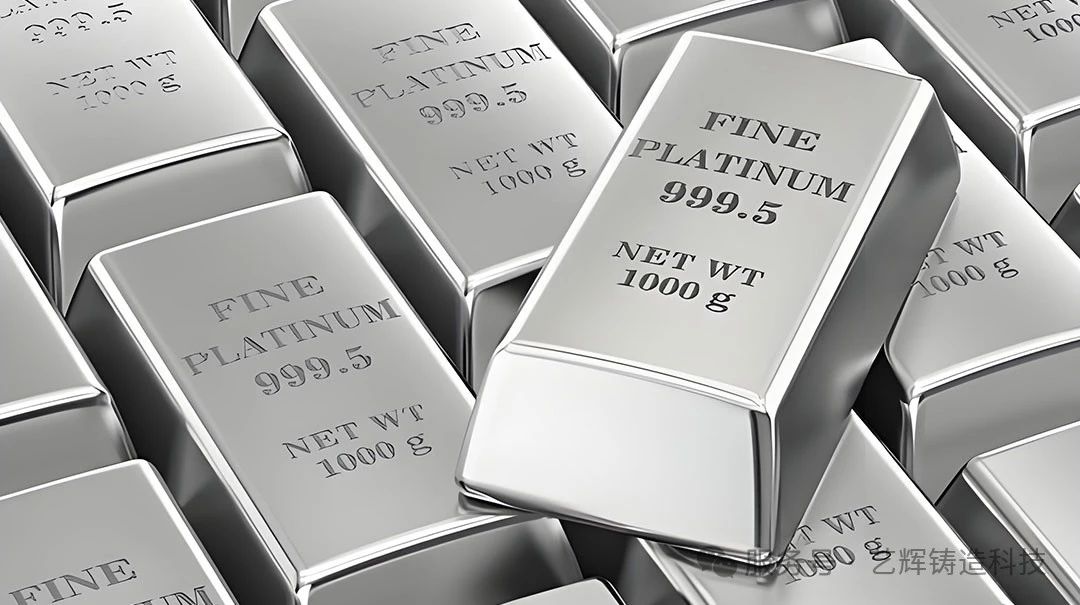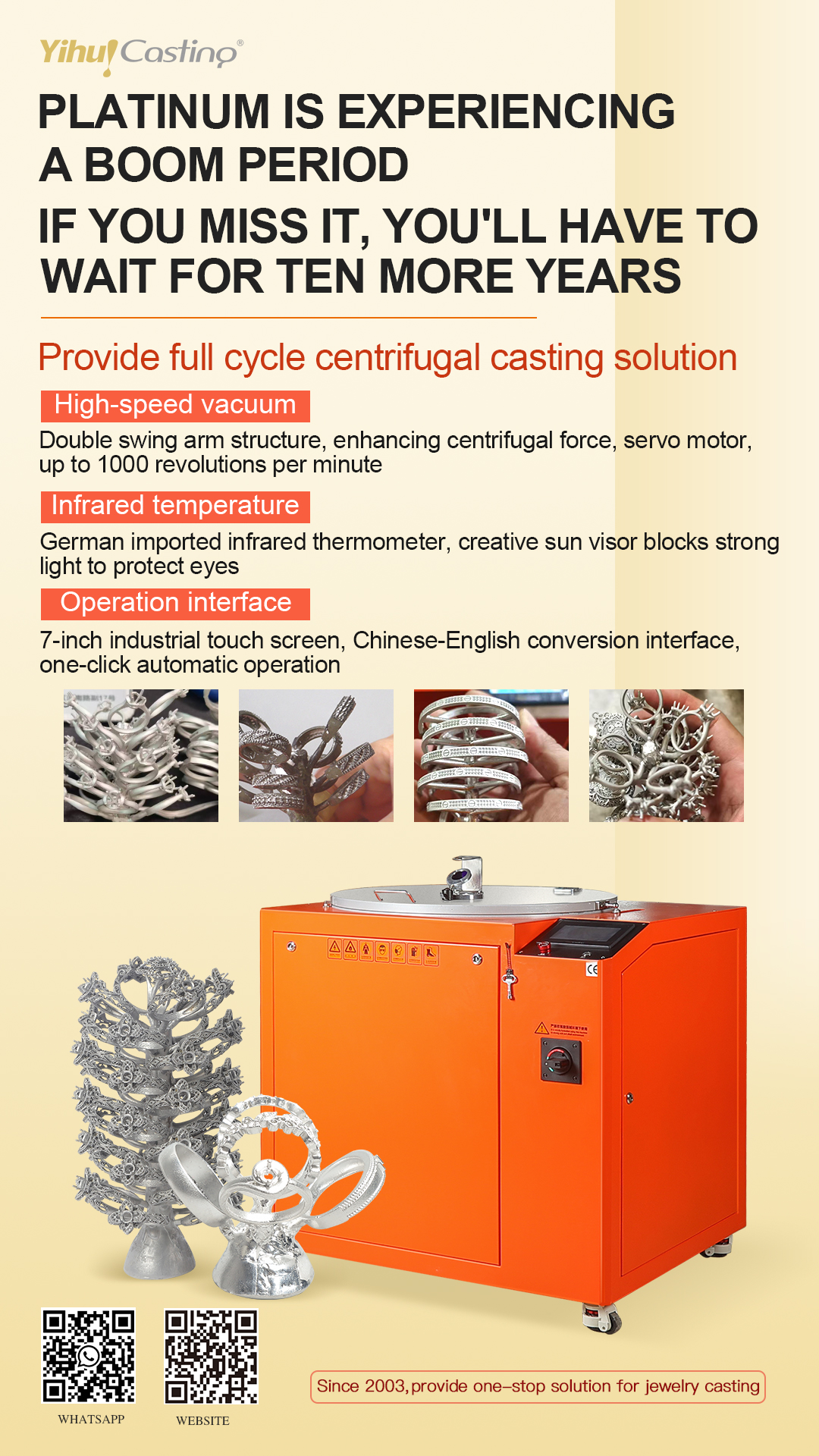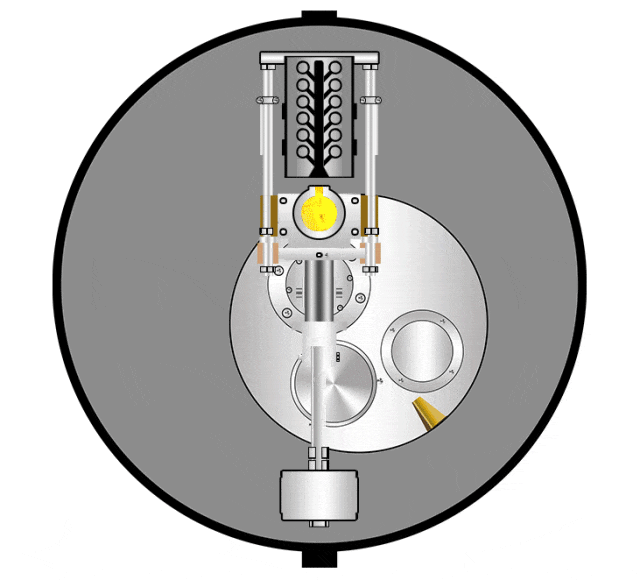"Platinum on the Rise: The Next Big Opportunity After Gold?"
"In recent years, platinum (Pt) has drawn significant attention due to its dual role as both an industrial metal and an investment asset. With the boom in new energy, hydrogen technology, and high-end jewelry, platinum demand continues to rise. The market widely believes it is currently undervalued and may experience a 'gold-like' surge in the future."

In the world of precious metals, platinum and gold have always been in the spotlight.
Platinum, renowned as the "King of Precious Metals," boasts exceptional rarity, a high melting point, corrosion resistance, and a distinctive pure white luster.
For precious metal manufacturers, mastering efficient and high-precision platinum casting is the key to dominating the market.
Centrifugal casting technology has emerged as the "secret weapon" to enhance both efficiency and quality in platinum processing!

Why is Platinum (Pt) Catching Up with Gold?
Rarer Than Gold: Platinum's annual production is only 5% of gold's, yet its price has long been undervalued.
Surging Industrial Demand: Hydrogen fuel cells, chemical catalysts, and medical applications are driving a sharp rise in platinum consumption.
Growing Investment Appeal: Amid global inflation, platinum is emerging as a new asset allocation choice for institutional investors.
Jewelry Industry Shift: High-end consumers are increasingly favoring platinum jewelry, boosting manufacturing demand.

Given platinum’s unique properties (melting point: 1772°C, high density), focus on these key factors:
High-Temperature Resistance → Use graphite or ceramic crucibles to prevent metal contamination.
Precision Temperature Control → Ensures optimal molten platinum fluidity and casting quality.
High-Speed Stability → Maintains uniform centrifugal force, preventing segregation defects.
Automation Level → Reduces manual errors and improves production consistency.

Platinum casting faces challenges like poor fluidity, oxidation susceptibility, and high shrinkage rates, leading to low yield and high costs with traditional methods. Centrifugal casting technology overcomes these issues with high-speed rotation, delivering:
Vacuum Melting & Casting → 3-minute casting per crucible, supports 24/7 continuous operation.
Dual-Swing Arm Design → Enhances centrifugal force with servo motor (up to 1000 RPM).
Low-Pressure High-Frequency System → Parallel-bar auto-balancing for stability.
German-Infrared Temperature Sensor → Precision thermal monitoring.
Innovative Sunshade → Blocks intense light, protecting operators’ eyes.
Wide Temp Range (490–2000°C) → Adaptable for diverse metals.
Multi-Metal Compatibility → Handles PT, stainless steel, K-gold, silver, etc.
Built-In Vacuum Pump → Ensures oxygen-free casting.

Jewelry Manufacturing → High-precision casting of platinum rings, pendants, and luxury accessories.
Industrial Components → Production of platinum catalyst substrates for hydrogen fuel cells and corrosion-resistant chemical equipment.
Investment Products → Efficient mass production of standardized platinum bars and coins.
Specialized R&D Parts → Ultra-pure platinum components for aerospace, medical implants, and high-tech applications.
As platinum (Pt) gains momentum to rival gold’s market dominance, those who master efficient casting technology first will lead the race! Centrifugal casting machines—with their high yield, precision, and cost efficiency—are the ultimate "profit multipliers" for precious metal manufacturers.
 online service
online serviceScan to wechat :
